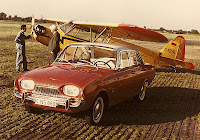The British black
comedy "The Assassination Bureau Limited" (US: "The
Assassination Bureau") premieres in London on 10 March 1969. The
film, directed by Basil Dearden, is based on the unfinished novel
"The Assassination Bureau, Ltd" by Jack London. The novel
was, after Jack London's death (1916), finished by Robert L. Fish. It
was published in 1963. Main stars are Oliver Reed, Diana Rigg, Telly
Savalas, Curd Jürgens, Philippe Noiret, Warren Mitchell and Clive
Revill. Unlike London's original novel, which is set in the United
States, the film is set in Europe.
Synopsis
London early 1900s,
the aspiring journalist Sonia Winter (Diana Rigg) uncovers an
organisation that specialises in killing high placed people for
money, the Assassination Bureau, Limited. To destroy the bureau she
hires the organisation to murder the bureau's own chairman, Ivan
Dragomiloff (Oliver Reed)...
 |
| Diana Rigg as Sonya Winter |
 |
| Oliver Reed as Ivan Dragomiloff and Diana Rigg as Sonya Winter |
 |
| Warren Mitchell as Herr Weiss and Oliver Reed as Ivan Dragomiloff |
Main cast
- Oliver Reed as Ivan Dragomiloff
- Diana Rigg as Sonya Winter
- Telly Savalas as Lord Bostwick
- Curd Jürgens as General von Pinck
- Philippe Noiret as Monsieur Lucoville
- Warren Mitchell as Herr Weiss
- Beryl Reid as Madame Otero
- Clive Revill as Cesare Spado
- Kenneth Griffith as Monsieur Popescu
- Vernon Dobtcheff as Baron Muntzof
- Annabella Incontrera as Eleanora Spado
- Jess Conrad as Angelo
- George Coulouris as Swiss Peasant
 |
| Diana Rigg as Sonya Winter and Philippe Noiret as Monsieur Lucoville |
 |
| Diana Rigg as Sonya Winter and Telly Savalas as Lord Bostwick |
Nominations
- Golden Globe (US) for Best English-Language Foreign Film, lost to "Oh! What a Lovely War"
- Golden Laurel (US) for Female New Face (Diana Rigg), lost to Ali MacGraw in "Goodbye, Columbus"
The Assassination Bureau, Sample clip (1969)









































